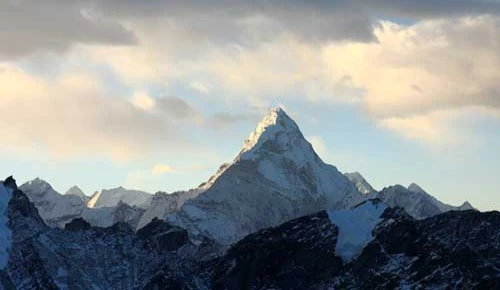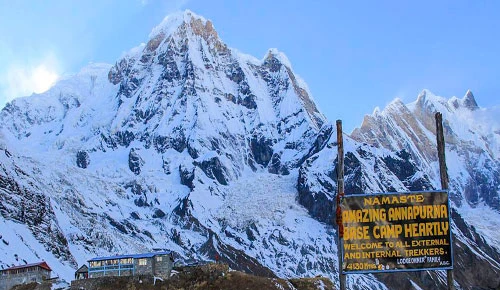What to Expect on the Everest Trek for Beginners
Ever since Sir Edmund Hillary and Tenzing Norgay accomplished their dream of conquering Mount Everest in 1953, this gigantic summit has attracted explorers and adventurers worldwide. The allure of observing the breathtaking landscapes of the Khumbu region while landing on top of the world is undesirable.
For beginners, the trek to Everest base camp is not simply a journey; it is an experience that transforms one's existence. So, if you are a beginner and thinking of starting your first trek, then it can be an exciting journey with beautiful views and the chance to reach the base camp of one of the most famous mountains in the world. But before you start making plans for your trek, you need to make sure you're ready. Strict preparation, physical fitness, and psychological stamina are all essential components.
The Everest region boasts a multitude of trekking routes, each showcasing the captivating beauty of the mountain. Among the many enchanting packages in this area, you'll find:
This beginner's guide for the base camp jouriney will tell you everything you need to know about, so you'll be fully ready for the amazing experience that's in store.
Table of Contents
Things to Expect During Trekking
Trekking demands meticulous planning to ensure an unforgettable and safe journey for adventurers. Presented below is an outlined 14-day itinerary for trekking to Everest Base Camp, crafted from the combined expertise of Nepal Trek and Adventure's experienced trekking guides.
Outlined Itinerary
- Day 1: Arrival in Kathmandu
- Day 2: Flight to Lukla and Trek to Phakding
- Day 3: Phakding to Namche Bazaar
- Day 4: First Acclimatization at Namche Bazaar
- Day 5:Namche to Tengboche
- Day 6: Tengboche to Dingboche
- Day 7: Second Acclimatization day at Dingboche
- Day 8: Dingboche to Lobuche
- Day 9: Trek From Gorakshep to Everest base camp and back to Gorakshep
- Day 10: Gorakshep to Pheriche via Kalapatthar
- Day 11: Pheriche to Namche
- Day 12: Namche to Lukla
- Day 13: Lukla to Kathmandu
- Day 14: Departure Day
Best Time
The best time to do this trek is during the pre-monsoon (spring) and post-monsoon (autumn) seasons, which typically align with March to May and September to November. During these periods, the weather in the Everest region is relatively stable, with clear skies and pleasant temperatures. The spring season, in particular, offers stunning views as the surrounding landscapes come to life with blooming rhododendrons and other flora. Autumn provides excellent visibility and is often favored for its mild weather conditions, making it the most popular trekking season. These months ensure you can enjoy the breathtaking scenery, complete the trek safely, and have a memorable experience. However, be prepared for chilly nights, and remember that weather in the mountains can be unpredictable, so it's essential to stay informed about local conditions.
Accommodation and Food
Accommodation in the base camp trial primarily consists of teahouses and lodges, providing simple yet cozy rooms with basic amenities like beds, blankets, and shared bathrooms. Accommodations are generally clean and comfortable but become more basic at higher altitudes. Reservations are recommended, especially during peak trekking seasons.
Food in the Everest region offers a variety of options, with teahouse menus featuring local and international dishes. Common choices include dal bhat (lentil soup and rice), noodles, momos (dumplings), and Western-style breakfasts. As you ascend, prices tend to rise, and the availability of fresh produce decreases. Trekkers should plan for balanced meals and carry snacks to supplement their diet as they ascend to higher altitudes.
Altitude Sickness
Acute mountain sickness (AMS), also known as altitude sickness, is a real risk on the trekking trip because of how quickly you rise to high elevations. Headaches, nausea, weakness, and tiredness are some of the symptoms. To avoid AMS, it's important to properly acclimate, stay hydrated, and slowly climb.
Trekkers should know the signs of serious AMS, like high-altitude lung edema (HAPE) and high-altitude brain edema (HACE), which can be very dangerous and even kill you. Pay attention to what your body is telling you, rest when it needs it, and go down if your symptoms get worse. A safe and effective trek depends on careful planning, getting used to the altitude, and knowing the risks that come with being at a high elevation.
Electricity, Networks, and Wi-Fi
The trekking route has limited electricity and the primary source is solar panels and generators. Teahouses along the trekking route offer basic charging facilities for a fee, but electricity availability can be inconsistent. Mobile networks, including Ncell and Nepal Telecom, provide sporadic coverage on the lower trekking trails. However, as you ascend towards higher altitudes, network connectivity becomes scarce. Wi-Fi is available in some teahouses, but it's often slow and unreliable. While you can occasionally connect with the outside world, trekkers should expect limited access to electricity, mobile networks, and Wi-Fi during their Everest Base Camp trek.
Permits for the Trek
Permits for the mountain journey are essential not only to ensure your safety but also to contribute to the preservation of the delicate environment. When embarking on this incredible adventure, you'll be required to obtain various permits and documents. Here's an elaborate breakdown of the permits required:
Trekking information management system (TIMS)
The Trekking Information Management System (TIMS) card is an essential document for trekkers in Nepal. It was introduced to ensure the safety and security of trekkers in the Himalayan region. The TIMS card serves as a means of recording trekkers' information and providing emergency assistance if needed. The fees collected from TIMS card issuance contribute to the maintenance and development of trekking trails and facilities in the trekking areas. Having a TIMS card is mandatory for trekking routes in Nepal, and it helps authorities keep track of trekkers for their safety and assistance in case of emergencies.
Khumbu Pasang Lhamu Rural Municipality's (KPRM) Permit
Khumbu Pasang Lhamu Rural Municipality's (KPRM) permit, often referred to as the KPRM permit, is a mandatory authorization required for trekkers and mountaineers visiting the Khumbu region in Nepal. This permit is distinct from the Sagarmatha National Park and TIMS (Trekkers' Information Management System) permits. The KPRM permit aims to regulate and manage tourism activities in the Khumbu area, ensuring environmental conservation and local community support. Trekkers and climbers passing through KPRM-administered areas, which include popular destinations like Everest Base Camp and Gokyo Lakes, must obtain this permit to trek or climb legally within the region. It contributes to the local economy and helps maintain the pristine environment of the Khumbu region.
Sagarmatha National Park Permit
Sagarmatha National Park Permit is a mandatory document required for anyone wishing to enter Sagarmatha National Park, which encompasses the Everest region in Nepal. This permit serves as an essential part of the conservation efforts for this UNESCO World Heritage Site and helps fund the preservation of the unique natural and cultural heritage of the area. Whether you're embarking on the iconic Everest Base Camp trek or exploring the surrounding regions, obtaining this permit is a legal requirement. It helps ensure that visitors contribute to the park's sustainability while enjoying the breathtaking landscapes, rare wildlife, and rich Sherpa culture that Sagarmatha National Park has to offer.
Packing Lists
Himalayan trekking requires careful packing to ensure your comfort, safety, and preparedness for changing weather conditions.
- Backpack
- Trekking Boots
- Clothing Layers
- Insulated Jacket
- Thermal Underwear
- Trekking Pants
- Gloves and Mittens
- Headwear
- Socks
- Sunglasses
- Trekking Poles
- Sleeping Bag
- Sleeping Mat
- Daypack
- Water Purification
- First Aid Kit
- Headlamp/Flashlight
- Power Bank
- Personal Toiletries
- Towel
- Sunscreen and Lip Balm
- Camera and Binoculars
- Travel Adapter
- Cash
Benefits while booking with us
Our packages also include many services to make your trek hassle-free and comfortable. Here are some of the benefits of booking the trek with us:
- All-inclusive packages include meals, transportation, accommodation, guides, and more.
- Expert management: Seasoned professionals handle all trip details.
- Peace of mind: Relax and enjoy your Everest Base Camp journey.
- Local expertise: Experienced guides provide insights and support.
- Hassle-free trekking: Leave logistics to us and focus on adventure.
- Safety and security: Our team ensures your well-being throughout the trip.
- Memorable experience: Maximize the joy of your Himalayan trek.
When you choose to book your trek with Nepal Trek and Adventure, you can unwind with the assurance that every detail will be expertly handled. This allows you to fully savor the incredible journey. Rest assured, this decision will optimize your entire trekking experience in the majestic Himalayas.








